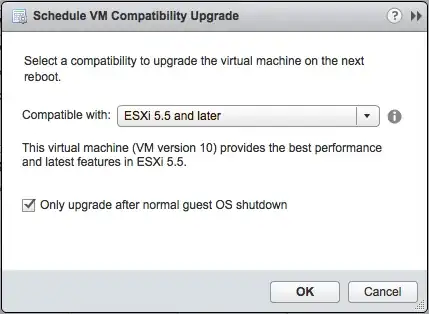At the beginning of the year we performed an upgrade of our vSphere environment from vSphere 5.0 to vSphere 5.1 U1 Build 1063329 compromised of about a dozen ESXi hosts and a vCenter instance hosted on Windows Server 2008 R2 SP1. One of the outstanding issues from this project is the upgrade of Virtual Hardware for Virtual Machines.
I'm having trouble understanding why I should go to work and downtime to upgrade the Virtual Hardware version on all of our VMs. Our newly created Virtual Machines are using Virtual Hardware v. 9, the most recent supported version in vSphere 5.1 U1 which resolves issues we were having with Windows Server 2012 R2 and WinPE 4.0 on our older vSphere 5.0 instance. All of our older Virtual Machines are compatible Virtual Hardware versions (KB2007240) so we are not forced to upgrade their hardware version.
Am I missing some technical reason for upgrading all our Virtual Machine's Virtual Hardware to the "newest" Version 9 since guest operating system and ESXi compatibility are not issues? Upgrading the Virtual Hardware is not necessarily trivial since I have to shutdown the VM, take a snapshot or backup of it and then upgrade it for a few hundred VMs. Other than avoiding having to do this in the future and getting warm fuzzies that all our VMs are running on the most recent Virtual Hardware version why should I bother doing a straight cutover instead of a rolling upgrade as we replace our Virtual Machines?
